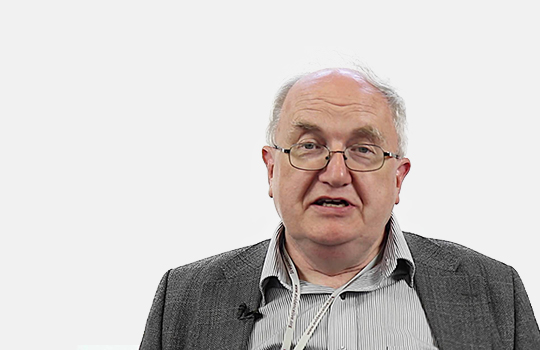If you think medicine is messy now, just you wait till it becomes “precise.”
 NEJM 12 Oct 2017 Vol 377
NEJM 12 Oct 2017 Vol 377
How to PREVAIL against Ebola
The West African Ebola outbreak was a lesson in all sorts of things. One was how to develop and test a vaccine during an epidemic. This got as far as phase 2 for two different vaccines: a chimpanzee adenovirus 3 vaccine and a recombinant vesicular stomatitis virus vaccine. Happily, the ebolavirus epidemic ended before phase 3 was reached. But the PREVAIL trials had time to demonstrate that by 1 month after vaccination, the vaccines had elicited immune responses, and these were largely maintained through 12 months.
Unhappily delirious
My father-in-law was the most rational of men. He enjoyed a pint at the golf club twice a week but otherwise seldom drank alcohol. But after a very protracted vascular procedure at the age of 80 he didn’t recognize that he was on a surgical ward and rambled incessantly. The staff seemed scandalized and put it down to alcohol withdrawal. Whatever basic surgical nursing training they had received, it seems they had never been told that “delirium is the most common surgical complication among older adults, with an incidence of 15 to 25% after major elective surgery and 50% after high-risk procedures such as hip-fracture repair and cardiac surgery.” Here’s a clinical review of the subject which I would like to recommend, but it too tends to wander and fails to recognize its audience, and I’m not left with any clear take-home messages for the people who have to deal with confused people in hospital beds. Except not to blame the patient, but look for a treatable cause, and avoid sedating drugs.
JAMA 10 Oct 2017 Vol 318
Precisely what is precision medicine?
“Precision medicine (PM) describes prevention, diagnosis, and treatment strategies that take individual variability into account. While PM aims to incorporate individual variability in genes, environment, and lifestyle, the emphasis in current practice is on personalized genetic profiling for diagnosis and risk assessment.” So begins a Viewpoint which is open access and worth reading. It may even be worth your while to print it and cover with comments in red ink. Yours will probably be different from mine, which would be longer than the article itself. If you think medicine is messy now, just you wait till it becomes “precise.”
Hormone tests don’t predict fertility in premenopausal women
Antimüllerian hormone (AMH, or MIH if you prefer to call it Müllerian-inhibiting hormone) is supposed to be a measure of “ovarian reserve”, and is a test offered by lots of fertility clinics. Here’s a study of nearly a thousand women from North Carolina without a history of infertility who were trying to conceive. They also had blood measurements of follicle-stimulating hormone and inhibin B, and urinary TSH. None of these bore any relation to success in conceiving over the following years. But I bet you that in ten years’ time they will still be offered by most private fertility clinics.
Ann Intern Med 10 Oct 2017 Vol 167
Pre-hypertensive primary aldosteronism
About 15 years ago, I thought it would be a good idea to look for hyperaldosteronism in people with persistently elevated blood pressure in primary care. But after talking to lots of people and reading lots of papers, I concluded that it was logistically impossible, and might lead to overdiagnosis with no patient benefit. No such qualms seem to trouble the authors of this study, which uncovered a new syndrome of “subclinical primary aldosteronism” by doing measurements of plasma renin activity and serum aldosterone in a cohort of normotensive patients. Those with high aldosterone and suppressed renin were at higher risk of developing elevated BP over subsequent years. In other words, they were at higher risk of acquiring a risk factor, so fulfilling the rules which govern the strange world of cautionary overdiagnosis.
Death from hypersedentarianism
Maybe a few people die from undetected hyperaldosteronism, but I think it’s certain that tens of millions die from overt hypersedentarianism. But I can’t prove it: I can only infer it from observational studies like this one. Even in a cohort of 8,000 followed for 4 years, the association between sitting time and mortality only just reached significance. Yet taken with all the other evidence, the case against spending most of your life sitting is incontrovertible.
The Lancet 14 Oct 2017 Vol 390
An antihistamine to restore sight in MS?
Clemastine is a sedating antihistamine which you can buy online at £8.40 for 60. It also induces oligodendrocyte progenitor cell (OPC) differentiation and myelination in mice. It was then found to have the same action in humans, leading to a small crossover trial to see if showed any effect on patients with relapsing multiple sclerosis with chronic demyelinating optic neuropathy on stable immunomodulatory therapy. The primary outcome was shortening of P100 latency delay on full-field, pattern-reversal, visual-evoked potentials. Well, yes, this is a surrogate outcome that you don’t understand any more than I do. But it’s a glimmer of hope for the reversal of demyelination in MS. If I had the disease, I would be strongly tempted to go online and spend £8.40. Only wait: most mistakes in medicine happen when wishful thinking outstrips the evidence. At the moment, you are more likely to have a car crash from taking a sedating drug than to grow new myelin by dosing yourself with clemastine.
The BMJ 14 Oct 2017 Vol 358
Operating on two patients at once
Call me old-fashioned, but operating on two people at the same time strikes me as wrong. However, a study of it from the USA seems to show that it does not affect outcomes in people there undergoing bariatric surgery. That’s as maybe, but it is still wrong. It would only be right if the patient had signed box B of a consent form saying:
I would prefer this operation to be carried out (A) continuously by the same surgeon on me alone; or (B) on me by the surgeon while he/she is also operating on someone else at the same time.
Plant of the Week: Fatsia japonica “Spider’s Web”
Fatsia is a big-leaved evergreen so closely related to ivy that the two can be combined in hybrids called Fatshedera. But unlike most ivies, fatsias don’t like dry conditions and don’t climb up things. Instead they provide year-round interest from their magnificent leaves. That being so, it behoves one to plant them where they will not be damaged by wind. They can stand a fair degree of frost provided they have adequate shelter.
There are now some really attractive—even spectacular—forms of Fatsia and Fatshedera with variegated leaves. “Spider’s Web” is probably the best, with big cut leaves which are widely and subtly variegated with white, especially at the edges. In spring, new leaves arise in creamy splendour. In late autumn, the plant produces fascinating spikes of white pom-pom flowers. If you have a dampish sheltered spot in your garden, you really have to have one of these in it.
